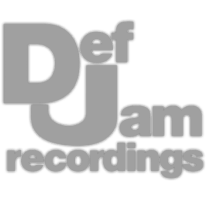Professional Analog Mastering.
Professional Analog Mastering.










Acustica Audio makes some really innovative plugins - all created with impulse responses. This free Arctic plugin is a combination of compression, limiting, and saturation - all three of which can be selected or blended.
Under the gain reduction meter, we have our makeup gain slider, which is super helpful since we can just quickly check to see how much we need to make up for.
At the bottom, we can adjust the timing of the attenuation and saturation, adjust our threshold to control the amount of attenuation, filter out lows before attenuation, and blend the overall effect in.
To the right, we have oversampling, our output dial and we can monitor the stereo signal or the delta, which shows us only what the processor is changing about the signal.
All-in-all, I think this is a really versatile plugin, with the one issue being how CPU-intensive it is due to utilizing multiple impulse responses to work. When combined with oversampling, this plugin might crash a session if you use a few instances of it.
Let’s take a listen to the plugin being introduced, and we’ll vary the processor between compression, limiting, and saturation so we can hear the differences.
Watch the video to learn more >
This is a great plugin if you need a couple of simple but really effective compressors. Bedroom Comp MkII lets you switch between VCA or tube compression and Optical or opto-cell compression.
Both VCA and Opto create smooth sounds but have very distinct characteristics, so it’s awesome to be able to quickly switch between the 2.
The plugin offers attack and release functions that vary between 5ms to 1 second, variable hard to soft knee shapes, input and output gain dials, and an internal high pass filter.
Then, we can adjust the threshold ratio and blend the compression in with the mix dial.
One thing to keep in mind is that VCA compression causes more compression than Optical, so if you switch between the 2, you’ll likely need to adjust the threshold to get similar amounts of gain reduction.
Let’s take a listen to how it controls the vocal, and we’ll switch between the two compression types to hear the differences.
Watch the video to learn more >
This doubler is a fantastic and simple option for creating a doubling effect. The controls are super straightforward - we can adjust the amount of the effect and the length of the delay used to introduce the effect.
Other than that, we just have a bypass. In my opinion, I think the sound is great, and the minimalistic controls make it easy to dial in some good settings.
Also, I personally enjoy the window’s screensaver until it receives some signal - just a cool touch.
Let’s listen and consider how this plugin could be used on BGVs, on a lead if used subtly, and how it could be used creatively if we were to automate some of the settings.
Watch the video to learn more >
If you want a more traditional delay plugin but with the ability to create unique reflections, I’d really recommend Deelay.
The delay taps can be set to notes, triplets, dotted notes - or milliseconds for specific timings. These reflections can be set to ping pong or made mono and can be cleaned or distorted with a large variety of distortion types.
On the left-hand side, we have the amount of diffusion, the perceived size of the space, low and high pass filters, tape-like modulation such as wow and flutter, and control for distortion.
On the right side, we can adjust the amount of modulation and its rate, feedback, spread, and the amount of dry and wet signals. Up top, we can keep the plugin processing to a low CPU with lower-quality diffusion or increase the quality at the expense of the CPU.
The two buttons on the bottom right change the filters and distortion from affecting the input to affecting the output.
Lastly, the mode gives us some unique characteristics and makes the delay tapes behave in drastically different ways. If you don’t know where to start, try the randomize button or cycle through the generous amount of presets.
Let’s take a listen and cycle through some presets - we’ll notice that we can quickly go from traditional delay to unique and creative temporal effects.
Watch the video to learn more >
This plugin is another simple one. It uses a delay to expand a signal - even if the signal starts mono.
All it takes to use is increasing the perceived size of the room and the mix. If you want your BGVs to sound super expansive, or maybe you want to use a cool effect on the adlibs or the lead for a short portion of the song, I think this would make a perfect addition to a vocal chain.
Let’s take a listen and notice how subtle settings could work on a lead but that the plugin seems to work best when used aggressively and creatively.
Watch the video to learn more >
Dreverb is my favorite free reverb plugin - it’s an algorithmic reverb that has a really impressive sound and can be set up to 100 seconds, which isn’t something you see too often.
The presets are a great place to start, but using them is simple nonetheless. We can adjust the decay time in the middle, adjust the dry and wet levels, alter the pre-delay to allow some of the signal to come through unaffected before reverb starts, and add diffusion to create a smoother sound.
Like the Deelay plugin, we have low and high pass filters on the input and some modulation options.
Then we can make the reverb mono, super wide, or anywhere in between with the Width dial.
Last up, we have some band crossovers and an input and output.
Let’s listen to a couple of presets so that we can quickly hear what the plugin has to offer.
Watch the video to learn more >
This is a new reverb I came across with some cool functions and a unique sound. It offers three algorithms: Hall, Room, and Temple. We can pick between 3 modes - classic is a traditional reverb setting, but Shimmer and Lost both have this strange but cool effect that generates a lower octave.
By clicking and dragging, we can alter the density and the amplitude of the reflections, as well as the length of the reflections. There’s also a freeze function that extends the length of the reflections and pre-delay that uses the BPM to set the delay time before reverb kicks in.
In the bottom window, we can adjust the mix if the reflections are clean or distorted and modulated with tape emulation and introduce high and lowpass filters.
Let’s take a listen to the plugin and notice how it offers some really unique timbres.
Watch the video to learn more >
I’ve probably talked about this plugin too many times, but it really is one of my favorites - I honestly think I use it on every mix I do in some form or other.
It’s a combination of an exciter and an air EQ - the mid and high air bands amplify the signal’s highest frequencies, while harmonics are also introduced to create a super bright sound.
The effect can become aggressive even with moderate settings, so start out with subtle settings - I rarely find that I set the bands higher than 20.
Let’s take a listen to it on vocals and notice how it brightens and clarifies them.
Watch the video to learn more >
Analog Obsession has quickly become one of the most popular independent developers, and for good reason. The plugins are free to download, with the option to offer financial support on Patreon - and at least all the ones I've used are really impressive.
This Kolin MB is a newer version of the original Kolin limiting amplifier. This time, we can independently compress the lows, mids, and highs of our vocals. These bands can be triggered by the incoming signal or an external side-chain on a band-by-band basis.
The ratio and threshold are set, but we can alter the amount of attenuation by altering the input, attack, release, and each band’s mix dial. Bypass switches are included for each band, as are crossovers between the lows and mids and the mids and highs.
Lastly, we can affect the input and output for the overall plugin, adjust the overall mix, and introduce oversampling if we notice any aliasing distortion.
Let’s listen to the plugin on our vocal and notice how it gives us a lot of control over which frequencies are attenuated, to what extent, and how much overall compression takes place.
Watch the video to learn more >
This is another new plugin I’ve come across, but I’m really glad I did - the plugin can quickly alter the perceived placement of the signal from the front to the side and behind.
The effect is surprisingly realistic for such a quick way to create psychoacoustic panning. Honestly, just this main dial would’ve convinced me to use the plugin, but the additional loudspeaker distance slider and rear image high-pass filter make it even more exciting.
So, whereas our typical pan pot lets us control if a signal is to the left or right and does so simply by altering the amplitude, this plugin seems to take multiple psychoacoustic principles into account, creating much more realistic placement.
When it comes to vocals, this is super helpful for doubles, BGVs, harmonies, or if you want to creatively pan the lead with some automation.
Let’s take a listen and notice how different this panning sounds from traditional panning.
Watch the video to learn more >
This EQ is simple but has a great vintage sound - I picked it for this list since the selectable frequencies almost seem tailored for quickly amplifying or attenuating important vocal ranges.
For example, if the vocal sounds muddy, I would attenuate 180Hz and amplify 2kHz. Or if it’s sitting on top of the mix or beat too much, I’d do the opposite.
If it sounds boxy, I could attenuate 400Hz, or if it’s nasally, I could attenuate 1.4kHz.
If I want some air, I could amplify 18kHz or attenuate 5.5kHz or 11kHz if the sibilance is too harsh.
Each filter can be amplified or attenuated by 16dB, as can the input or output.
In the middle, we have 12dB/octave high and low pass filters around 80Hz and 10kHz, respectively, as well as a bypass switch.
What I like about the filters is that they’re broad when boosting and narrow when attenuating, making them great for attenuating problem frequencies but more naturally accentuating what I want more of.
Also, the plugin introduces some significant harmonics and interesting nonlinearities in the dynamics.
Let’s take a listen and notice how it can range from relatively modern sounding to vintage.
Watch the video to learn more >
These two plugins are very simple and seem complimentary, so I’m going to show them together.
The leveler maximizes lower amplitude signals and compresses higher amplitude signals - so the quieter details become easier to hear, and the peaks are controlled.
The sweetener introduces a high-pass filter, a boost to the vocal’s fundamental around 150Hz, a dip in the mids, and a boost to clarifying frequencies.
Combined, these two plugins are perfect if you want to quickly process dialogue for a podcast, but if used subtly, they can also help with vocals.
Let’s take a listen to our vocal process with the leveler and then the sweetener and notice how it becomes louder, dynamically controlled, and has a frequency response that makes it fuller while becoming easier to hear.